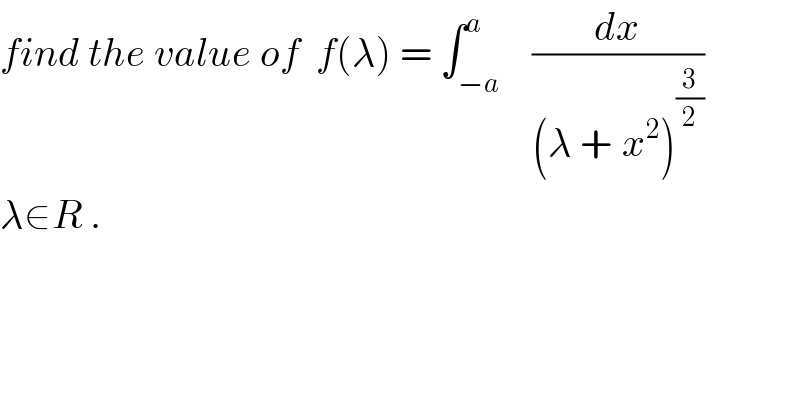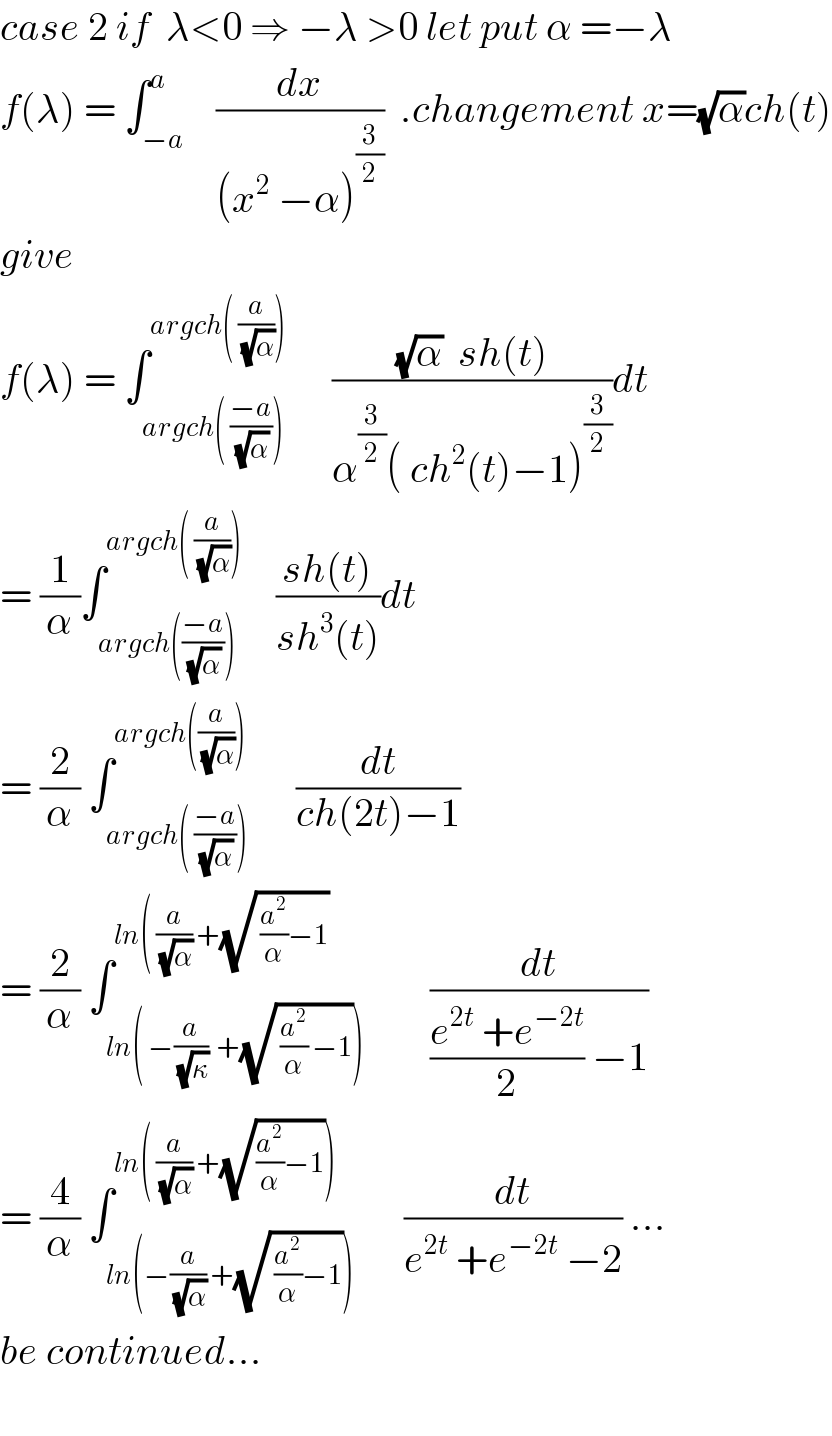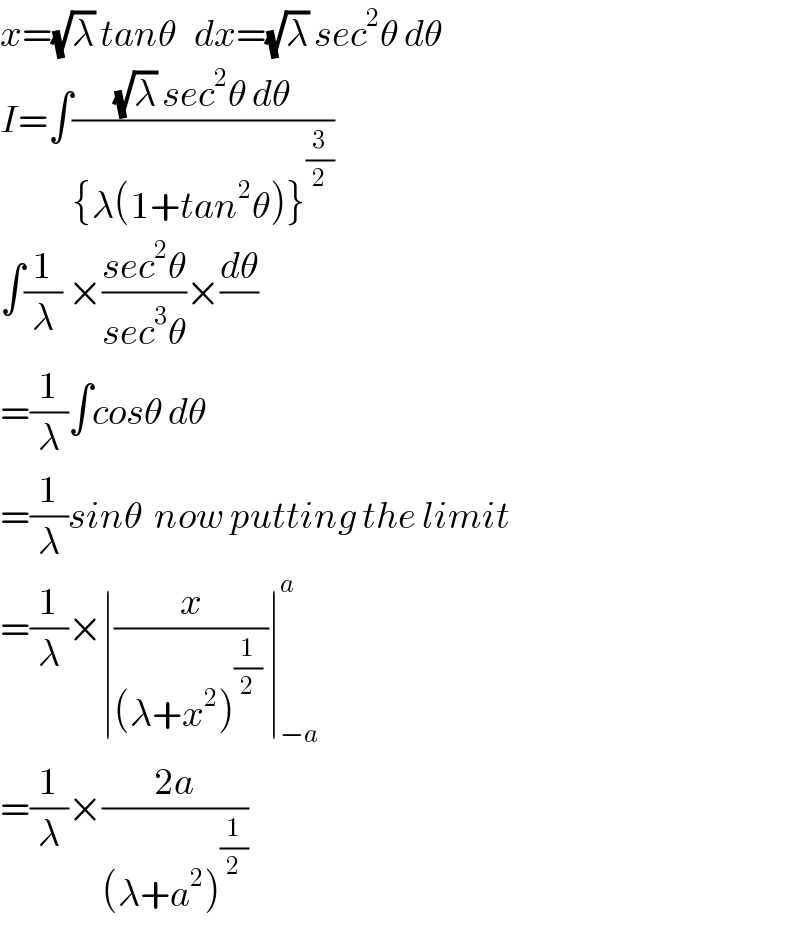
Question and Answers Forum
Question Number 35832 by abdo mathsup 649 cc last updated on 24/May/18

Commented by abdo.msup.com last updated on 25/May/18
![case 1 ifλ>0 let use the changement x=(√λ) tan(t) f(λ) = ∫_(−arctan((a/λ))) ^(arctan((a/λ))) ((√λ)/(λ^(3/2) (1+tan^2 (t))^(3/2) )) (1+tan^2 t)dt =(1/λ)∫_(−arctan((a/(√λ)))) ^(arctan( (a/(√λ))) ) (1/((1+tan^2 t)^(1/2) ))dt = (2/λ) ∫_0 ^(arctan((a/(√λ)))) cos(t) dt =(2/λ) [ sin(t)]_0 ^(arctan((a/(√λ)))) = (2/λ) sin(arctan((a/(√λ)))) but we have sin(arctanx) = (x/(√(1+x^2 ))) so sin(arctan((a/(√λ)))) = (a/((√λ) (√(1+(a^2 /λ))))) = (a/(√(λ +a^2 ))) ⇒f(λ) = ((2a)/(λ(√(λ+a^2 ))))](Q35859.png)
Commented by prof Abdo imad last updated on 25/May/18

Commented by prof Abdo imad last updated on 26/May/18
![let find K=∫ (dt/(e^(2t) +e^(−2t) −2)) chamgement e^(2t) =u give K = ∫ (1/(u +u^(−1) −2)) (du/(2u)) =(1/2) ∫ (du/(u^2 +1 −2u)) =(1/2)∫ (du/((u−1)^2 )) = −(1/(2(u−1))) =((−1)/(2(e^(2t) −1))) +c so f(λ) = −(4/(2α)) [ (1/(e^(2t) −1))]_(ln(((−a)/(√α)) +(√((a^2 /α)−1))) ^(ln( (a/(√α)) +(√((a^2 /α) −1))) = ((−2)/α){ (1/(((a/(√α)) +(√((a^2 /α)−1))))) − (1/((−(a/(√α))+(√((a^2 /α) −1))))) = (2/λ){ (1/(( (a/(√(−λ))) +(√(−(a^2 /λ)−1)))))−(1/((((−a)/(√(−λ)))+(√(−(a^2 /λ)−1))))) with λ<0 .](Q35923.png)
Answered by tanmay.chaudhury50@gmail.com last updated on 24/May/18

Commented by abdo.msup.com last updated on 25/May/18

